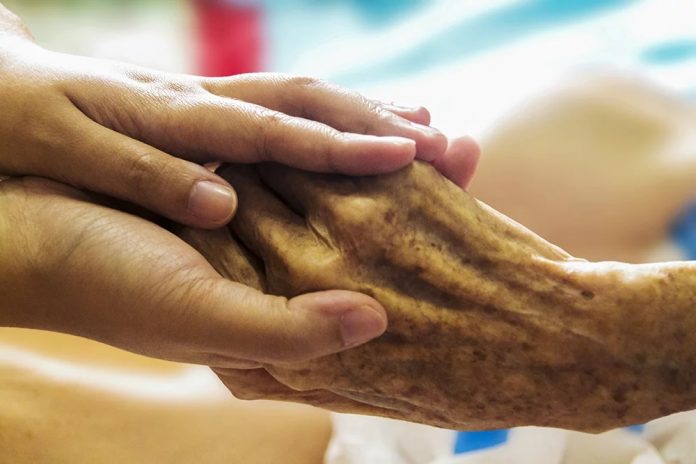The Rev. John J. Paris is a professor emeritus and research professor at Boston College. The Rev. Kevin Wildes is university professor at St. Joseph’s University. Both are Jesuit priests. The views expressed in this commentary do not necessarily reflect those of BCNN1.
In a recent RNS column, Charles C. Camosy, in writing about new research about people who are in a “persistent vegetative state,” cited Dr. Joseph Fins’ studies of what Fins calls “deep brain stimulation.” Fins reports that his research reveals that many patients diagnosed as in a persistent vegetative state in fact have some level of consciousness.
That leads Fins, and with him Camosy, to favor “a new civil rights” movement to be sure all brain-injured patients get “up-to-date” diagnoses, good pain management and the latest therapies to help them improve. That aspirational goal sounds as if it ought to be readily adopted.
But Camosy goes further by invoking the case of Terri Schiavo, the Florida woman in a persistent vegetative state whose case drew international attention in the mid-2000s when her husband moved to end her life support. “We were there for Terri Schiavo and her family,” Camosy notes, before saying, “There are new and influential allies to be had in the fight to protect people who have serious brain injuries.” He concludes, “The time to move is now.”
It is important not to confuse Schiavo’s case with the patients with whom Fins is concerned. In his autopsy report, Florida’s Pinellas County chief medical examiner, Jon R. Thogmartin, confirmed that her condition was consistent with that of someone in a persistent vegetative state, that her brain had “atrophied” to about half that of normal, that she was blind and that no treatment could have remotely improved her condition.
Throughout his piece, Camosy’s analysis, unlike Fins’, does not differentiate among the categories of those who suffer serious brain injuries: “brain death,” “persistent vegetative state,” “locked in syndrome,” a “minimally conscious state” and “coma.” For Camosy, all of these are lumped into “persistent vegetative states” and classified as “vegetables.”
In this Camosy is not unique. John Paul II in a 2004 address to the Pontifical Academy for Life argued that patients in a persistent vegetative state are not vegetables, but human beings with all of the dignity of others created as humans. In the same address John Paul maintained that “artificial” nutrition and fluids are “natural” means, not medical treatments. As such they are “ordinary care” that must be provided to every unconscious patient.
Every medical association that has addressed the issue and every court of final jurisdiction that has ruled on it, including the U.S. Supreme Court, has rejected that analysis. Each declared that artificial nutrition and fluids, unlike food and water, are medical treatments to be assessed as any other medical intervention, i.e., on the subjective assessment of the patient (or proxy), as to the proportionate benefit and burden of the intervention.
Here the medical societies and the various appellate courts follow the consistent analysis of Catholic moral theology from Pope Basil the Great in the 4th century through the Vatican’s 1980 “Declaration on Euthanasia” and John Paul II’s 1995 encyclical Evangelium Vitae, all of which hold that medical interventions have limited efficacy. They are to be utilized on the basis of the patient’s (or proxy’s) judgment on the benefit and burden that accrue to the patient from their use.
Camosy’s view that medically assisted feeding and hydration are “ordinary” treatments means they would be morally required. But traditionally, a medical treatment is considered “ordinary” only if it offers hope of improved health. If there is no hope of improvement, there is no moral reason to pursue the treatment.
Even if there is a hope of benefit, the benefit alone does not always make a treatment morally obligatory. If a treatment is either physically or morally burdensome for the patient or others, then one can morally withhold or withdraw the treatment. The assessment of the burdensomeness of a treatment is a quality-of-life judgment, made by the patient or her surrogates, relative to the patient’s perception of his or her own life.
Source: Religion News Service
All Content & Images are provided by the acknowledged source
